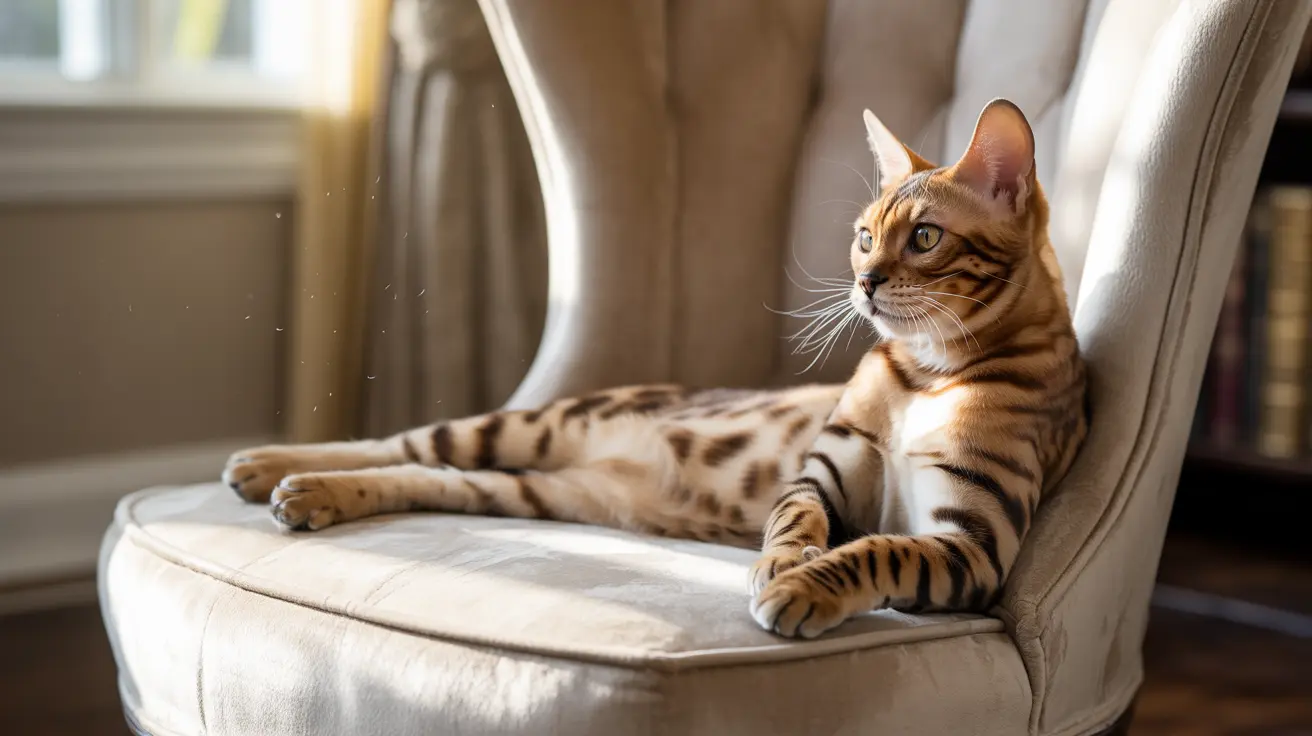Understanding Bengal Cat Shedding
If you're considering adding a Bengal cat to your family, you might be wondering about their shedding habits. Bengal cats do shed, but they're known for being one of the lowest-shedding cat breeds available. Their unique, short, pelt-like coat – inherited from their wild Asian leopard cat ancestors – contributes to their minimal shedding characteristics.
While no cat is completely shed-free, Bengals maintain a reputation for being relatively low-maintenance when it comes to fur cleanup. Their distinctive coat texture results in less loose hair around your home compared to many other domestic cat breeds.
Seasonal Shedding Patterns
Bengal cats typically experience two main shedding seasons annually. The most noticeable shedding occurs during spring when they shed their winter coat. A less pronounced shedding period happens in fall as they prepare for winter coat growth. During these times, you may notice a temporary increase in loose fur.
Outside of seasonal changes, healthy adult Bengals maintain relatively consistent shedding levels throughout the year. However, factors such as indoor living and artificial lighting can sometimes affect their natural shedding cycles.
Factors That Influence Bengal Shedding
Diet and Nutrition
A Bengal's diet plays a crucial role in their coat health and shedding patterns. High-quality, protein-rich food helps maintain coat integrity and can reduce excessive shedding. Essential fatty acids, particularly omega-3s and omega-6s, are vital for healthy skin and fur.
Environmental Factors
Indoor temperature, humidity levels, and exposure to natural light can all affect how much your Bengal sheds. Maintaining a stable indoor environment helps regulate shedding patterns. Stress can also trigger increased shedding, so keeping your Bengal's environment calm and enriching is important.
Age and Health Status
Bengal kittens shed more during their transition to adult coat, typically around 6-8 months of age. Senior Bengals might experience changes in their coat quality and shedding patterns. Any sudden changes in shedding could indicate underlying health issues and warrant veterinary attention.
Managing Bengal Cat Shedding
Grooming Requirements
Despite their low-shedding nature, regular grooming helps maintain a Bengal's coat health. Weekly brushing with a soft-bristled brush or grooming mitt is usually sufficient. During shedding seasons, you might want to increase grooming frequency to twice weekly.
Creating an Optimal Environment
Provide your Bengal with a stress-free environment, appropriate scratching posts, and interactive toys to prevent stress-related shedding. Maintain consistent indoor temperatures and humidity levels to help regulate their coat's natural cycle.
Special Considerations for Allergy Sufferers
While Bengals are often recommended for people with mild cat allergies due to their lower shedding, they still produce allergenic proteins in their saliva and skin cells. Regular cleaning and good ventilation can help manage allergen levels in your home.
Frequently Asked Questions
Do Bengal cats shed more during certain seasons, and how can I manage it?
Yes, Bengals shed more during spring and fall. Manage seasonal shedding by increasing grooming frequency and using appropriate grooming tools like rubber brushes or grooming mitts during these periods.
How often should I groom my Bengal cat to reduce shedding effectively?
Weekly grooming is typically sufficient for Bengals, but increase to twice weekly during shedding seasons. Use gentle brushing techniques and appropriate tools designed for short-haired cats.
Can a Bengal cat's diet or stress levels affect how much they shed?
Yes, both diet and stress significantly impact shedding. Feed high-quality, protein-rich food and maintain a calm environment to minimize stress-related shedding.
Are Bengal cats a good choice for people with mild cat allergies because of their shedding?
While Bengals may be better tolerated by some allergy sufferers due to their lower shedding, they still produce allergens. Spend time with a Bengal before committing to ensure compatibility with your allergies.
When should I be concerned about excessive shedding or bald spots in my Bengal cat?
Consult a veterinarian if you notice sudden increases in shedding, bald patches, skin irritation, or any unusual changes in your Bengal's coat condition, as these could indicate underlying health issues.
Conclusion
While Bengal cats do shed, their unique coat characteristics make them one of the lower-maintenance cat breeds in terms of shedding. With proper care, nutrition, and regular grooming, managing a Bengal's shedding is relatively straightforward. Understanding their natural shedding patterns and maintaining good care practices will help keep your Bengal's coat healthy and your home relatively fur-free.






